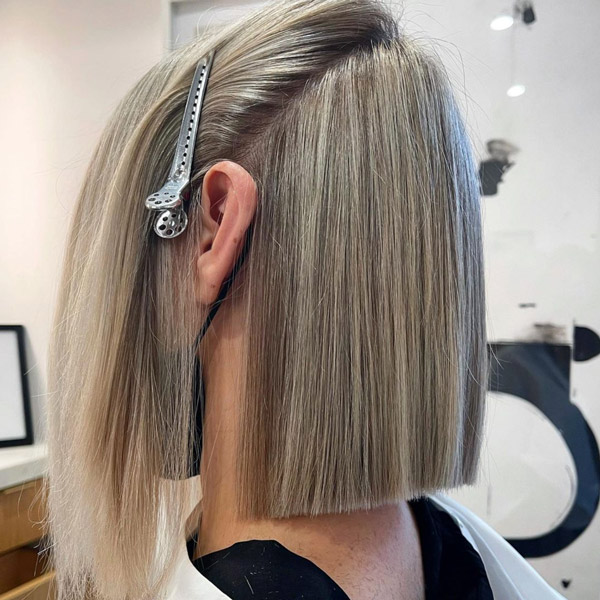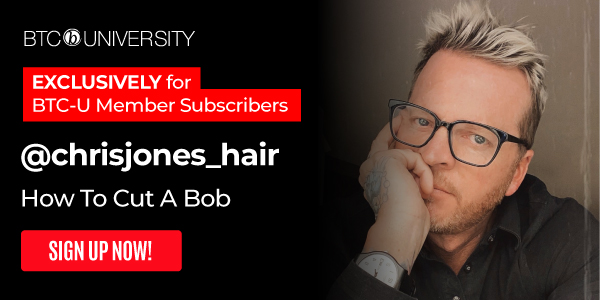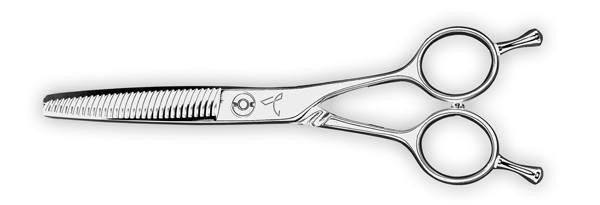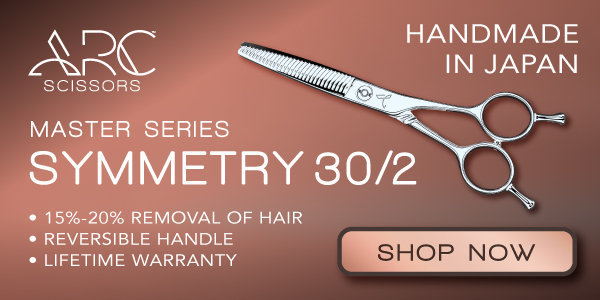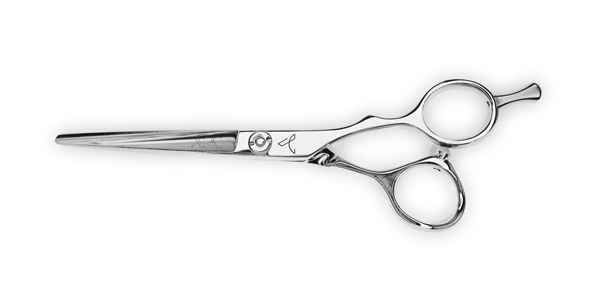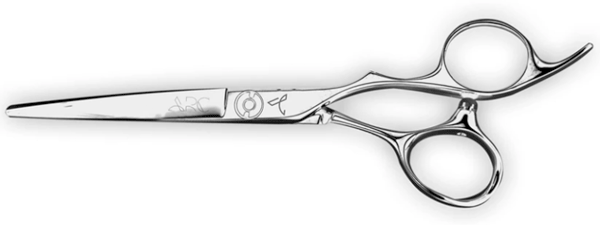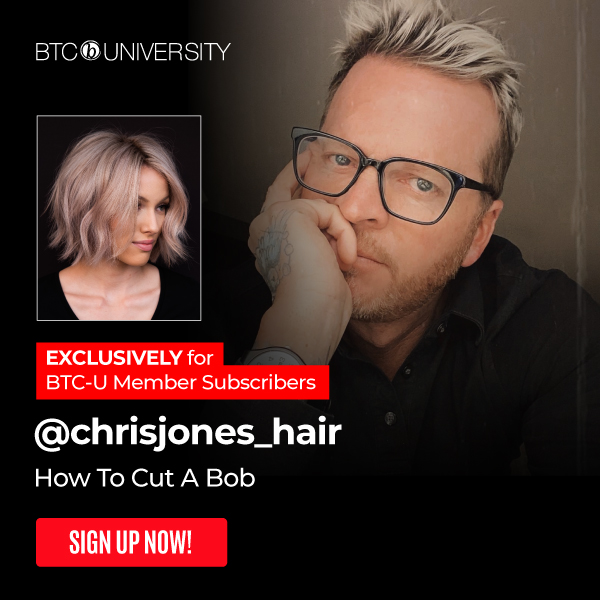How to Avoid a Bulky Bob: 4 Techniques To Try
4 Cutting Techniques For Thick-Haired Clients Requesting A Bob
Trying to cut a bob on a client with thick hair can be stressful. If you’re triggered by the idea of texturizing vs. thinning, damaged ends and bell-shaped bobs, don’t spiral. We tapped tips from some serious cutting experts to help create a calm cutting game plan and achieve the bob of you (and your clients) dreams.
Keep scrolling for tips on cutting techniques for creating a flattering shape, how to navigate damaged ends and the tools you need to achieve it all!
First: Keep hair dry to identify high-density areas
Don’t let dense hair become a wet blanket (see what we did there?). Get an idea of where thickness lives before wetting to avoid removing weight from thinner areas and save you from extra work later. Los Angeles-based stylist Erik Jon (@erikjonhair) shared some key areas to note:
-
- The center back: “Clients with high-density hair will experience thickness in this area,” he explains. Erik prefers to use a gliding, freehand technique in this section to make sure enough weight is removed.
- The hairline: The hairline is typically the least dense area for most clients. Erik suggests avoiding thinning this area completely and instead focus on blending techniques for a cohesive cut.
- The perimeter: Damaged ends? Erik advises keeping weight removal to a minimum. Instead, focus on creating a shape that allows the hair to grow out in its healthiest state.
Pro Tip: For curly and wavy clients, Erik only debulks heavier, denser curls. Why? If a curl is too heavy, the natural pattern will be weighed down and the true shape won’t come through.
Tip #1: Know the difference between thinning vs texturizing
“Thinning is typically needed for a client that has thick or a lot of hair,” explains Connecticut-based stylist Summer Evans (@summerevansstudio). “Texturizing adds movement to a haircut and if done properly, is a technique that can be used on any client—even if their hair is on the thinner side,” she explains.
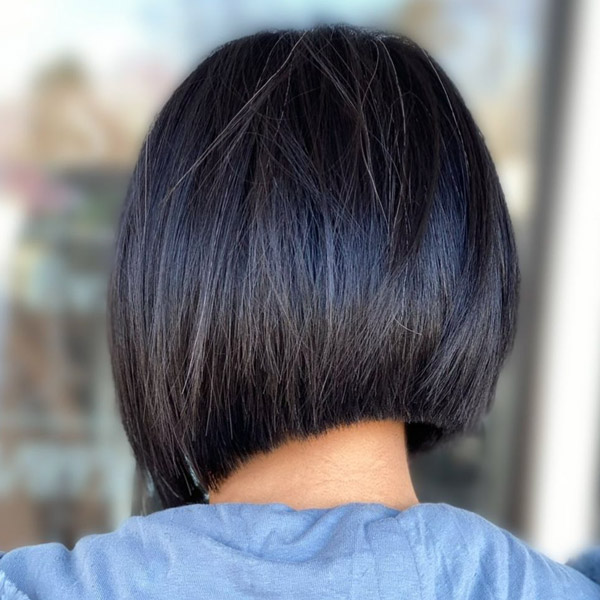
Summer’s go-to tool for removing weight? The SYMMETRY 30/2 Reversible Blender from ARC™ Scissors. “When I am debulking my bobs I need a texturizer that gives me control over how much hair I remove. The SYMMETRY 30/2 Reversible Blender only removes 15 to 20 percent of the hair. So they are perfect for that because they take out just the right amount of hair every time,” she explains.
Ready to remove some weight? Click here to get your pair of SYMMETRY 30/2 from ARC™ Scissors!
Tip #2: Use Vertical Graduation To Remove Weight & Create A Flattering Shape
To lean out bulky sides, 2021 #ONESHOT Bob/Lob Winner Chris Jones (@chrisjones_hair) creates a horizontal parting at the hairline and works roughly an inch or two above the ear. Overdirecting the sections out and slightly angled down, he uses the SYMMETRY 30/2 with the straight blade on the bottom, closing the shears when exiting to slide cut and create subtle graduation.
“This really leans out the shape so it is flattering to her face,” he explains. “Since I have a section that will fall over this subtle graduation, the ends won’t look wispy or frayed and it just removes the bulk right at her jawline.”
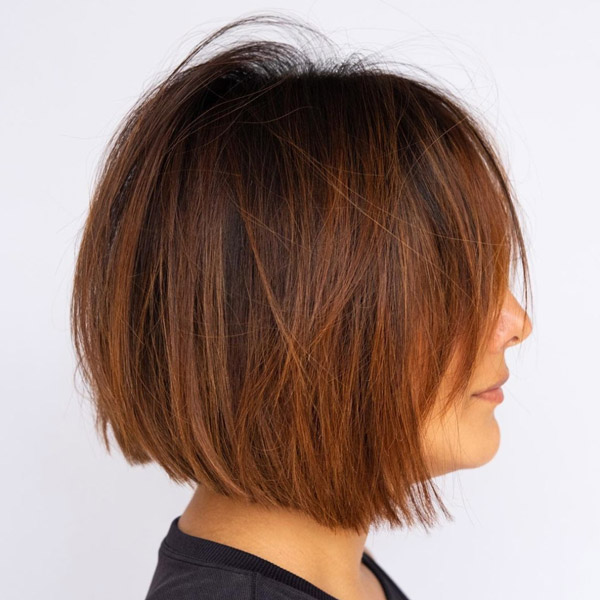
Related: 3 Cutting Techniques To Remove Weight From Thick Hair
Tip #3: Avoid over-thinning with a slice and weave technique
Scared of creating holes when removing weight? Don’t be. Instead, try this technique from Cali-based stylist John Nguyen (@john.n1115).
- Take a vertical slice on dry hair.
- Then, weave the thumb blade all the way through the slice.
- Without fully closing the blades, softly back cut the weave using a sliding motion. Since this technique doesn’t remove a lot of hair at once, it’s easier to control.
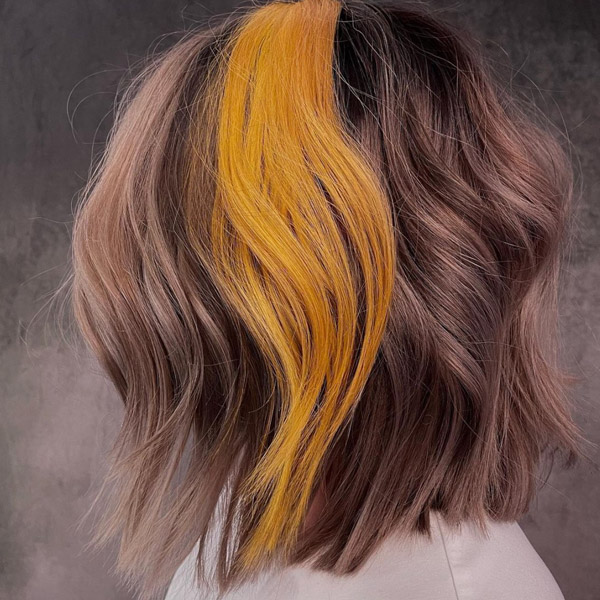
John’s technique uses the entire blade, so sharp scissors are a must. That’s why he works with the HARMONY II scissors from ARC™ Scissors. Made from 100% Japan-made steel, they are sharp enough to back cut with snagging or pulling on the hair.
Try John’s weave and slice technique ASAP! Click here to purchase a pair of HARMONY II from ARC™ Scissors
Tip #4: How to keep ends from flaring out
Remove weight, create shape and add movement to the perimeter? Yes, please! An undercutting technique helps ARC™ Scissors cutting expert Briana Cisneros (@brianacisneros) keep the baseline blunt but avoids the ends from flipping out and creating a bell shape.
Using her PARAGON II from ARC™ Scissors, Briana point cuts the perimeter, leaving each section slightly longer than the previous. This collapses the shape into the neck, which also helps avoid a bell shape.
Upgrade your scissors to the PARAGON II! Click here to get your next new pair!
Want more cutting education? Learn Chris’s entire cutting technique on BTC University!
More from
ARC™ Scissors
-
BTC Hair Trend Report
Summer 2024’s Hottest Haircut Trends
-
Blowouts
Bob Styling Guide: 5 Ways To Style Short Hair
-
BTC Hair Trend Report
The Biggest Haircut Trends of 2024
-
Dry-Cutting
Bang Breakdown: How To Cut 2024’s Top Fringe Trends
-
Dry-Cutting
2024 Fringe Guide: How To Consult, Cut & Style Trendy Bangs
-
BTC University
10 Gifts & Stocking Stuffers on Every Hairdresser’s List This Year
-
BTC Events
BTC “On Tour” Nashville Recap: Everything You Missed
-
BTC Hair Trend Report
The Biggest Haircut Trends of Fall & Winter 2023
-
BTC Hair Trend Report
Layering Guide: How To Cut & Style With Confidence
-
Bobs
The ’90s Bob: How To Cut & Style This Trending Haircut
-
Facebook Lives
Volume Guaranteed: Try This Layering Technique For Fine Hair
-
Barbering
How To Style The Biggest Men’s Summer Trends
-
Bobs
The Biggest Haircut Trends of Summer 2023
-
Bobs
The French Bob: How to Cut it
-
Bobs
The Bixie: 3 Cutting Techniques to Master the Look
-
Brunette
Trend Breakdown: Hailey Bieber’s Glazed Brunette
-
Barbering
2023’s Top 9 Hair Trends For Men
-
BTC Hair Trend Report
2023 Fringe Guide: How To Cut This Year’s Biggest Trends
-
BTC Hair Trend Report
2023 Hairstyling: 11 Trends You Need To Know
-
BTC Hair Trend Report
Invisible Layers: What This Haircut Trend Really Means
-
BTC Hair Trend Report
2023’s Biggest Haircut Trends
-
Bobs
Hailey Bieber’s “Preppy, Contoured Bob” Trend: What You Should Know
-
BTC University
4 Styling Secrets For Butterfly Layers
-
This Year’s BIGGEST Products: 2022’s Most Talked About





